
Categories
- Case Study (4)
- Coaching (6)
- Direction (1)
- Entrepreneur (1)
- Experience Innovation (8)
- Leadership (9)
- Leadership (14)
- Strategy Consulting (8)
Recent Posts
Leisure travelers both young and old are becoming more adventuresome with travel, seeking exciting and unique travel locations.
Some of their pain points include:
The following questions were raised:
How might a mobile app increase the opportunity to find current happenings and reduce FOMO?
How might a mobile app decrease the time to reach group consensus on unplanned activities?
The research was narrowed by focusing on the target market of baby boomers born between 1945-1965 who travel for leisure and take on the responsibility for planning great travel experiences for themselves, partners, and family members. They travel in and outside of the United States, seek novel adventures, and are often not active users of mobile travel apps.
Secondary research revealed that baby boomers possess more than half (54%) of all US household wealth and account for 80% of travel spending. They are looking for novel travel experiences and are increasingly booking smaller, niche tours led by local experts and seeking educational, immersive, and experiential travel experiences that offer the “behind the scenes” glimpse of local culture.
Primary research involved a screener survey to screen for baby boomers who plan leisure travel for themselves and significant others. Interviews were conducted with baby boomers that were qualified through the screener survey. An interview guide was developed and interviewees were asked about their experiences planning a trip, including from the time they thought about traveling through after they returned from a trip. The goal of the research was to:
At the completion of the interviews, a persona was developed that represents the different users of the mobile app. A customer journey map was created that identified the highs and lows experienced by the target audience when planning travel, during travel, and returning from a trip. For example, Curios Cara was one of the personas that were developed and her experiences selecting travel locations, planning, getting around on-site, and returning from trips were synthesized.
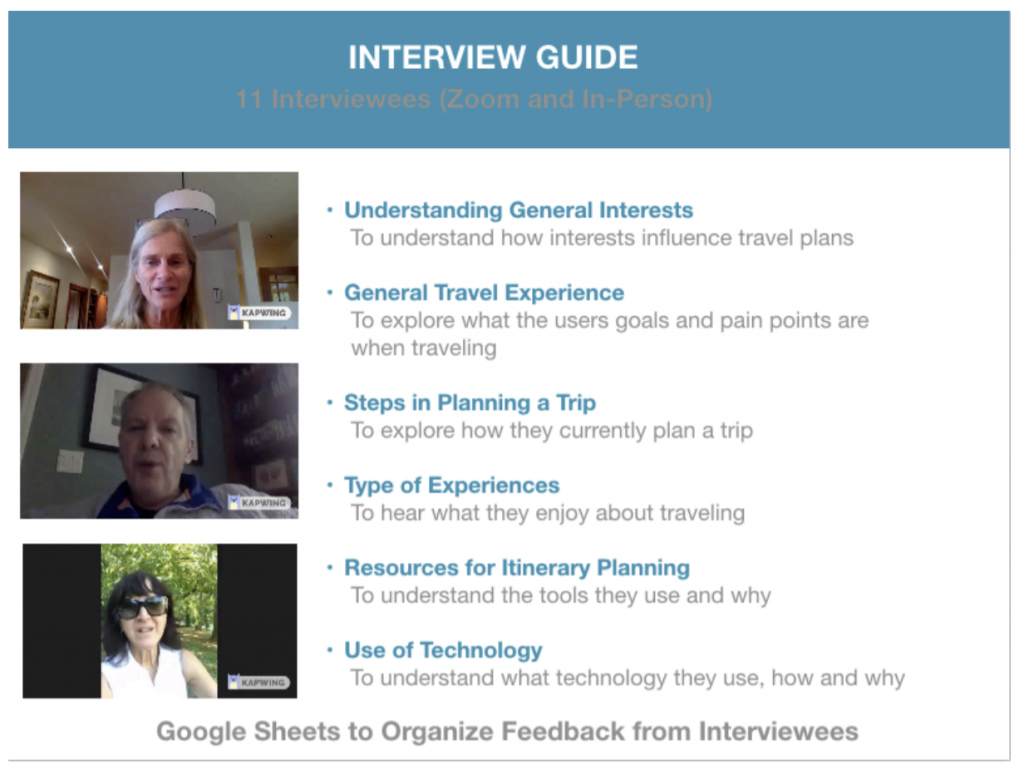
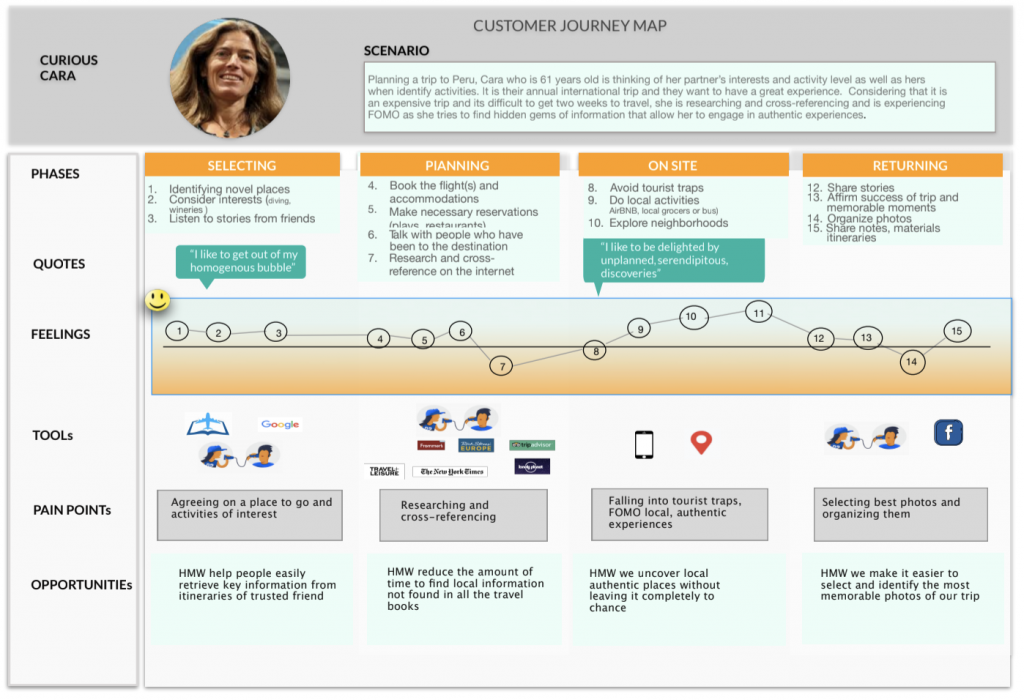
Through the interviews, we learned that most interviewees expressed an interest in novel international travel, escaping the tourist infrastructure, and connecting with locals. They spent a great deal of time researching their trips using many sources (books, websites, travel shows, talking with friends) to ensure that the activities they planned would be pleasant for all. Primary interests in their leisure travel are safety, new experiences, and ensuring a good time for everyone. Itineraries from friends or other well-versed travelers were one of the most treasured sources of information. They do not like their days to be too planned, as they want to leave room for serendipitous discoveries. They described some of their most exciting moments as when they discovered interesting places or local experiences through exploration.
Baby boomers don’t typically use many phone apps for traveling and use their phones primarily for photos, calls, and texting. Fifty percent of these travelers use their phones when traveling to view maps and restaurant reviews.
In addition to the interviews, a competitive analysis of existing mobile travel options was conducted and evaluated for ease of use and customizing capabilities.
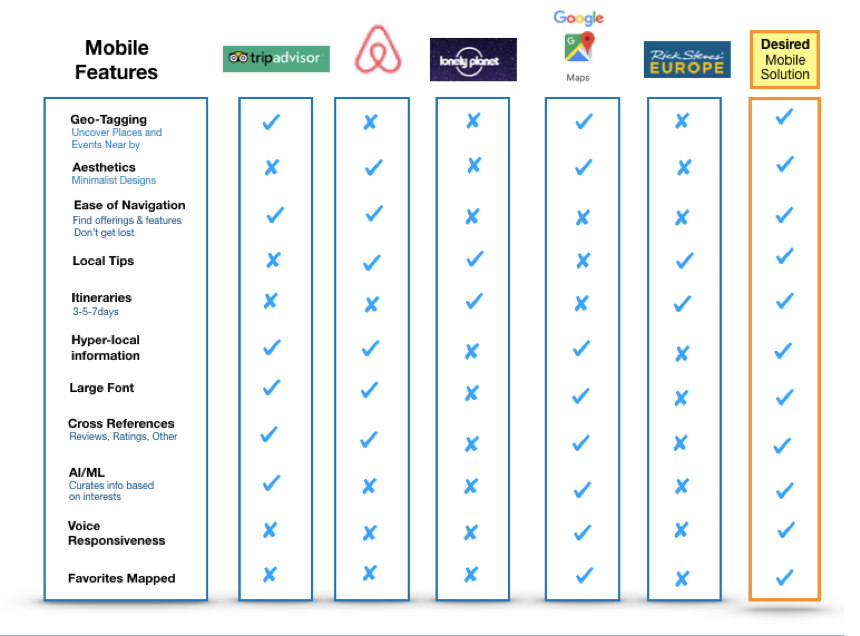
After researching competitors, conducting both a competitive and heuristic analysis, and learning the interests and needs of the target audience through interviews, key product and design features for a mobile app were identified.
The objective of the interface was to keep the format familiar to users by using Google maps but to add features specific to the needs of the users identified during the discovery process. This decision to use Google Maps was to reduce cognitive overload for those who typically don’t use mobile apps for travel. Maintaining familiarity with known apps allows the user to focus on being in the moment and enjoying their experience.
Many baby boomers wear reading glasses. Accordingly, the following were considered in the design:
The challenge in designing this mobile app was to balance modern aesthetics, visual simplicity, familiarity, and digital accessibility.
A 2019 research report by Deloitte on consumer use of mobile phones and voice found:
Baby boomers use Facebook far more than other social media platforms to keep in touch with friends, family and loved ones and to stay informed. As a result, the mobile app incorporated the Facebook platform for sharing itineraries and favorite places from their trip.
To evaluate whether you want to visit a site, the map has the ability to have a 360 street view where you can take a trip down a street and to a location, prior to going there, to determine if it is an area you and your co-travelers are interested in exploring.
To reduce FOMO, the app included information on current happenings. Travelers can zoom in to a location and virtually explore. The app includes a menu option (e.g. Restaurants, coffee, bars..) and daily events options (today, tomorrow, this weekend…). Once the traveler finds an event of interest, they can easily add the event to their calendar.
Interviewees expressed delight in getting the itineraries of friends. They noted that being well-traveled, they are often asked by friends to share their recommendations of places and activities from their travels. Therefore, an itinerary feature was included. The feature allows travelers to zoom in to a location and capture a photo, name, geo-location, date, and time. They then can auto-fill a personalized itinerary. Additional notes and photos may be added and the Itineraries can be readily shared by email or through Facebook.
To increase the likelihood of discovering new places and activities of interest when traveling, preferences can be added for interests such as cuisine, activities, coffee places and etc. Artificial Intelligence(AI) and Machine Learning(ML) are used to make recommendations based on these preferences.
Interviewees noted that they often brought hard copies of maps and materials in case they did not have wifi connectivity. The app includes the downloadable map feature so travelers can navigate using the map on their phones without having wifi connectivity.
In order to address safety concerns, the app includes government travel advisories on health and safety as well as a local news feature.
The next step consisted of creating a feature site map. This process helped inform how the app user might move from feature to feature, providing a more connected view of the app.
Next, low-fidelity sketches were developed for each feature of the app with annotations describing the actions to be taken by the users. User flows were developed in Sketch to help identify potential user behavior when completing app tasks so that developers can plan appropriately.
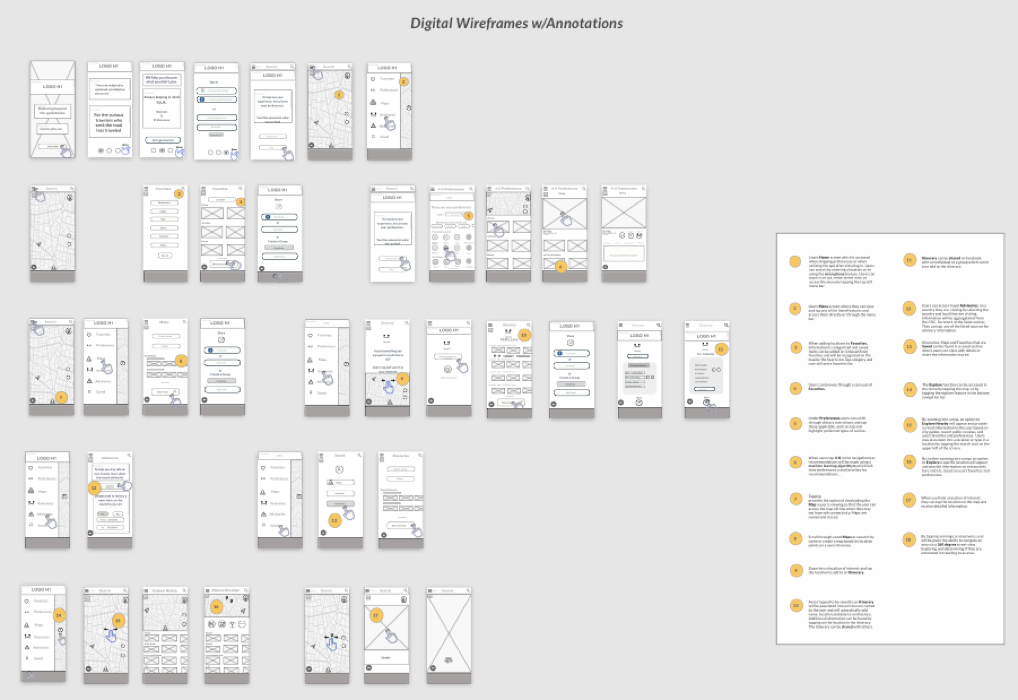
This process informed how the app user might move from feature to feature, providing a more connected view of the app.
Next, medium-fidelity sketches were developed for each feature of the app with annotations describing the actions to be taken by the users.
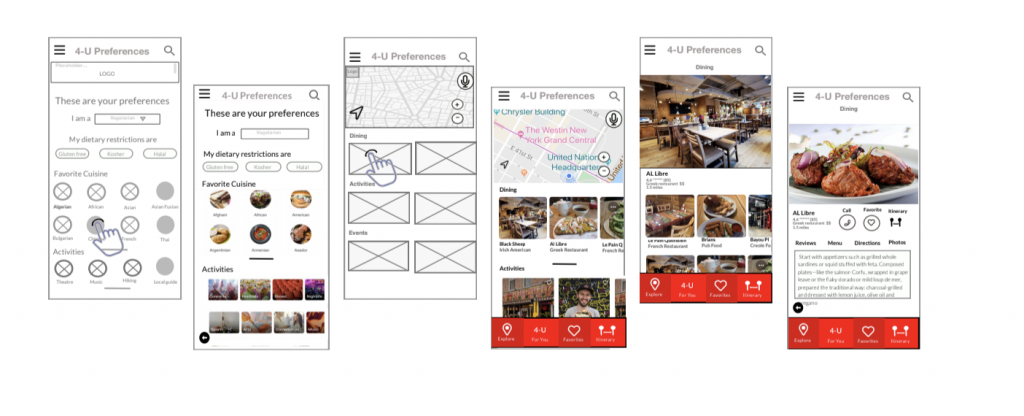
The last step was to bring the higher fidelity prototype back to the users to test and refine. View the video illustrating a user testing the prototype.
